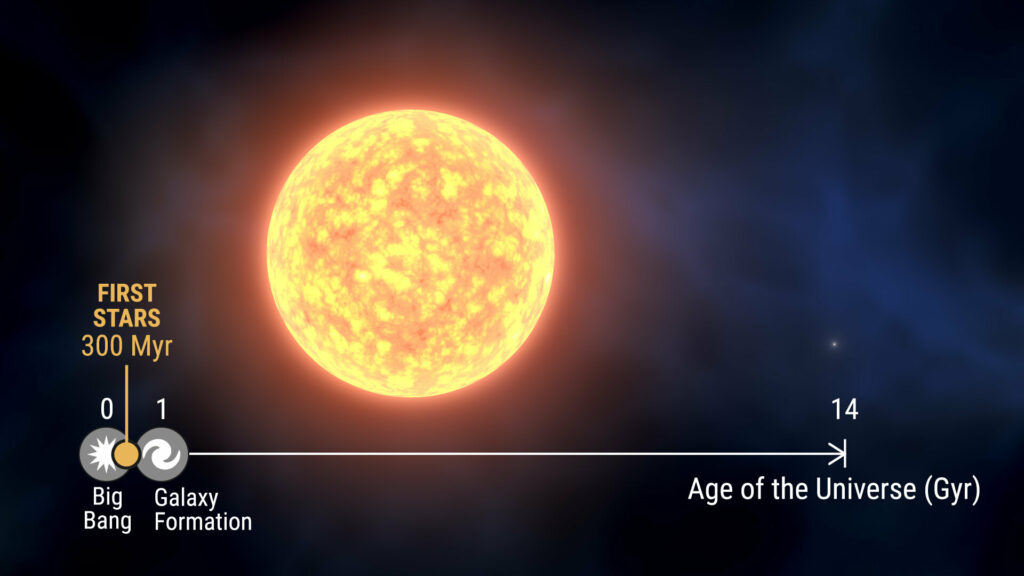An international team of researchers has confirmed the nature of the red giant SMSS 1605-1443. It is indeed one of the oldest stars in our Milky Way.

The red giant SMSS 1605-1443 was discovered in 2018. It is located at a distance of about 35 thousand light-years from Earth. The dying star attracted the attention of researchers due to its extremely unusual chemical composition. It contains the smallest amount of iron among all the luminaries known to us. At the same time, SMSS 1605-1443 is rich in carbon.
A similar chemical composition indicates that SMSS 1605-1443 is a very old star. The luminaries formed immediately after the Big Bang had a very large mass and consisted almost of hydrogen and helium (with very small admixtures of lithium and beryllium). They lived only a few million years and then died, managing to produce some heavier elements, like carbon.
After the discovery of SMSS 1605-1443, it was suggested that the star formed shortly after the Big Bang from a cloud consisting of the remnants of the first generation luminaries. To test this hypothesis, astronomers examined the red giant using an ESPRESSO receiver mounted on the VLT.
Observations have shown that SMSS 1605-1443 is part of a binary system. During the subsequent analysis, astronomers measured the ratio of carbon-12 and carbon-13 isotopes in the atmosphere of the red giant to test the possibility of mass transfer from its companion. The analysis showed that SMSS 1605-1443 contains 60 times more carbon-12 than carbon-13. This means that the star did not absorb the companion substance and retained its original chemical composition. Thus, it is a real living fossil, the study of which gives scientists the opportunity to look into the times when our Universe is only a few hundred million years old.
According to https://phys.org
Follow us on Twitter to get the most interesting space news in time
https://twitter.com/ust_magazine

